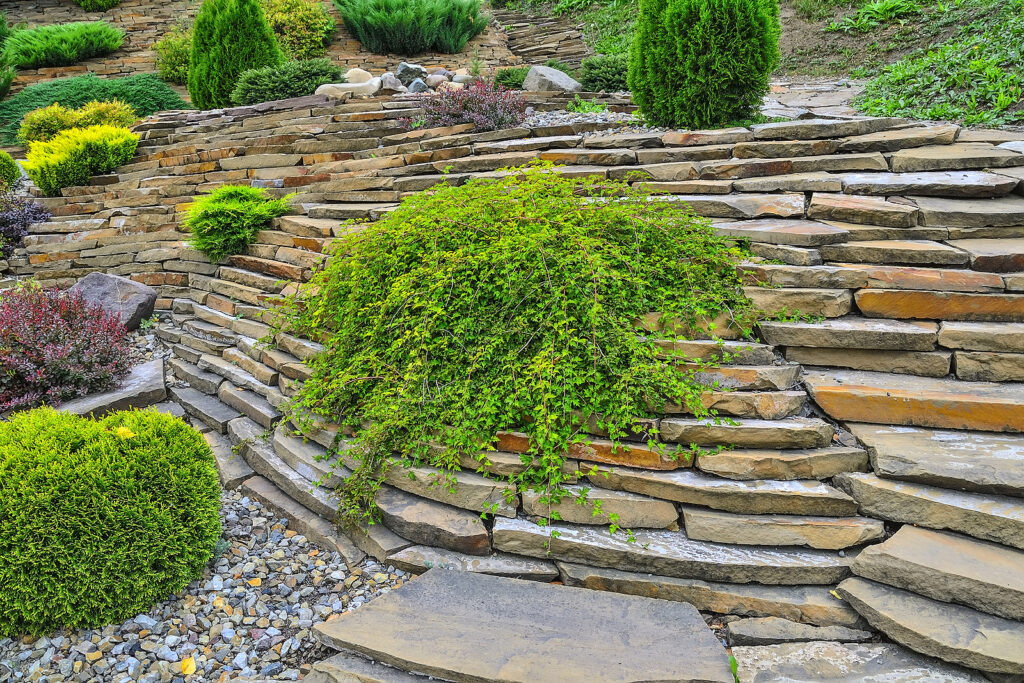Stephandra is a small, deciduous shrub known for its delicate, arching branches and finely cut leaves. It belongs to the rose family (Rosaceae) and is native to East Asia, particularly Japan and Korea. The most common variety grown in gardens is Stephandra incisa, often called cutleaf stephandra or lace shrub, which is prized for its elegant, fern-like foliage and low-growing, spreading habit.
This shrub is ideal for ground cover, slopes, or woodland gardens, providing a soft, textured look. In summer, it produces small white to yellowish flowers, which, while not showy, add a touch of subtle beauty to the plant.

Where to Plant Stephandra
Stephandra thrives best in the following conditions:
- Light: Prefers partial shade to full sun. It grows well in dappled sunlight or areas with morning sun and afternoon shade. In regions with hot summers, some shade is beneficial to prevent leaf scorch.
- Soil: It does well in moist, well-draining soil that is slightly acidic to neutral (pH 5.5-7.0). It can tolerate a range of soil types, including clay, sandy, or loamy soil, but good drainage is essential.
- Space: Stephandra spreads naturally, making it suitable for slopes or as a ground cover. Allow ample space for it to grow—approximately 3-5 feet wide.
Planting Stephandra
- Planting Time: The best time to plant stephandra is in early spring or fall, giving the plant time to establish before extreme temperatures arrive.
- Preparing the Soil: Work compost or well-rotted manure into the soil to improve fertility and drainage. If the soil is heavy clay, consider adding sand or grit to enhance drainage.
- Planting Process:
- Dig a hole twice as wide and just as deep as the root ball.
- Place the plant in the hole, ensuring the top of the root ball is level with the soil surface.
- Backfill the hole with soil, pressing gently to remove air pockets.
- Water thoroughly to help the soil settle around the roots.
Caring for Stephandra
Watering
- Initial Care: Water regularly during the first growing season to help the plant establish a deep root system. Keep the soil consistently moist but not waterlogged.
- Long-term Care: Once established, stephandra is relatively drought-tolerant. Water during extended dry periods, especially in summer. Mulching around the base can help retain moisture and keep the roots cool.
Fertilizing
- Stephandra does not require heavy feeding. An annual application of compost or a balanced, slow-release fertilizer in early spring is usually sufficient.
- Avoid over-fertilizing, as excessive nutrients can lead to leggy growth.
Pruning
- When to Prune: Pruning is usually done in late winter or early spring before new growth begins. Light trimming can also be carried out after flowering in summer.
- How to Prune:
- Remove any dead, damaged, or diseased branches.
- Thin out the plant if it becomes too dense, cutting back some older branches to the base to encourage new growth.
- Lightly shape the plant if needed, but avoid heavy pruning, as it has a naturally graceful form.
Mulching
- Apply a 2-3 inch layer of mulch around the base of the plant to retain moisture, suppress weeds, and keep the roots cool.
- Use organic materials like bark chips, leaf mold, or compost.
Winter Care
- Stephandra is generally hardy in USDA zones 4-8, meaning it can withstand cold winters. In colder regions, applying a thicker layer of mulch around the base in late fall can help protect the roots from freezing.
Propagating Stephandra
Stephandra can be propagated through cuttings or division:
- Cuttings:
- Take softwood cuttings in early summer. Cut a 4-6 inch section of healthy stem, remove the lower leaves, and dip the cut end in rooting hormone.
- Plant the cutting in a pot filled with well-draining soil, keep it moist, and place it in a shaded area until roots develop.
- Division:
- Divide established plants in spring or fall. Carefully dig up the plant, separate the root ball into sections, and replant immediately.
Stephandra Pests and Diseases
Stephandra is relatively pest- and disease-free. However, you should still watch out for:
- Aphids: These tiny insects can appear on new growth but are usually not a severe issue. Treat with insecticidal soap or a strong water spray if needed.
- Powdery Mildew: Occasionally, powdery mildew may develop in overly humid conditions. Ensure good air circulation around the plant and avoid overhead watering.
Using Stephandra in the Garden
- Ground Cover: Its spreading habit makes it an excellent ground cover for larger areas. It forms a dense mat, helping to suppress weeds and prevent soil erosion on slopes.
- Woodland Gardens: With its natural, delicate look, stephandra fits perfectly in shaded woodland gardens alongside ferns, hostas, and other shade-tolerant plants.
- Border Planting: It can be used at the front of borders for a low, mounded appearance, complementing taller shrubs and perennials.
- Rock Gardens: Its arching branches and fine texture make it suitable for rock gardens where it can cascade over rocks and soften hard edges.
- Erosion Control: Ideal for stabilizing slopes and embankments, as its root system helps to hold the soil in place.
Benefits of Growing Stephandra
- Low Maintenance: Once established, it requires minimal care, making it suitable for gardeners seeking a low-maintenance option.
- Erosion Control: Its dense growth helps stabilize soil on slopes.
- Pest and Disease Resistance: It’s relatively free from major pest and disease problems.
- Year-round Interest: Although its flowers are not particularly showy, the foliage provides visual interest throughout the growing season, turning a lovely yellow or orange in the fall.
Summary
Stephandra is a versatile, low-maintenance shrub that can add texture and grace to various garden settings. Its ease of care, combined with its attractive foliage, makes it a valuable addition to slopes, borders, woodland gardens, or as ground cover. With proper planting and minimal maintenance, stephandra will thrive, bringing natural beauty to your garden for years to come.



